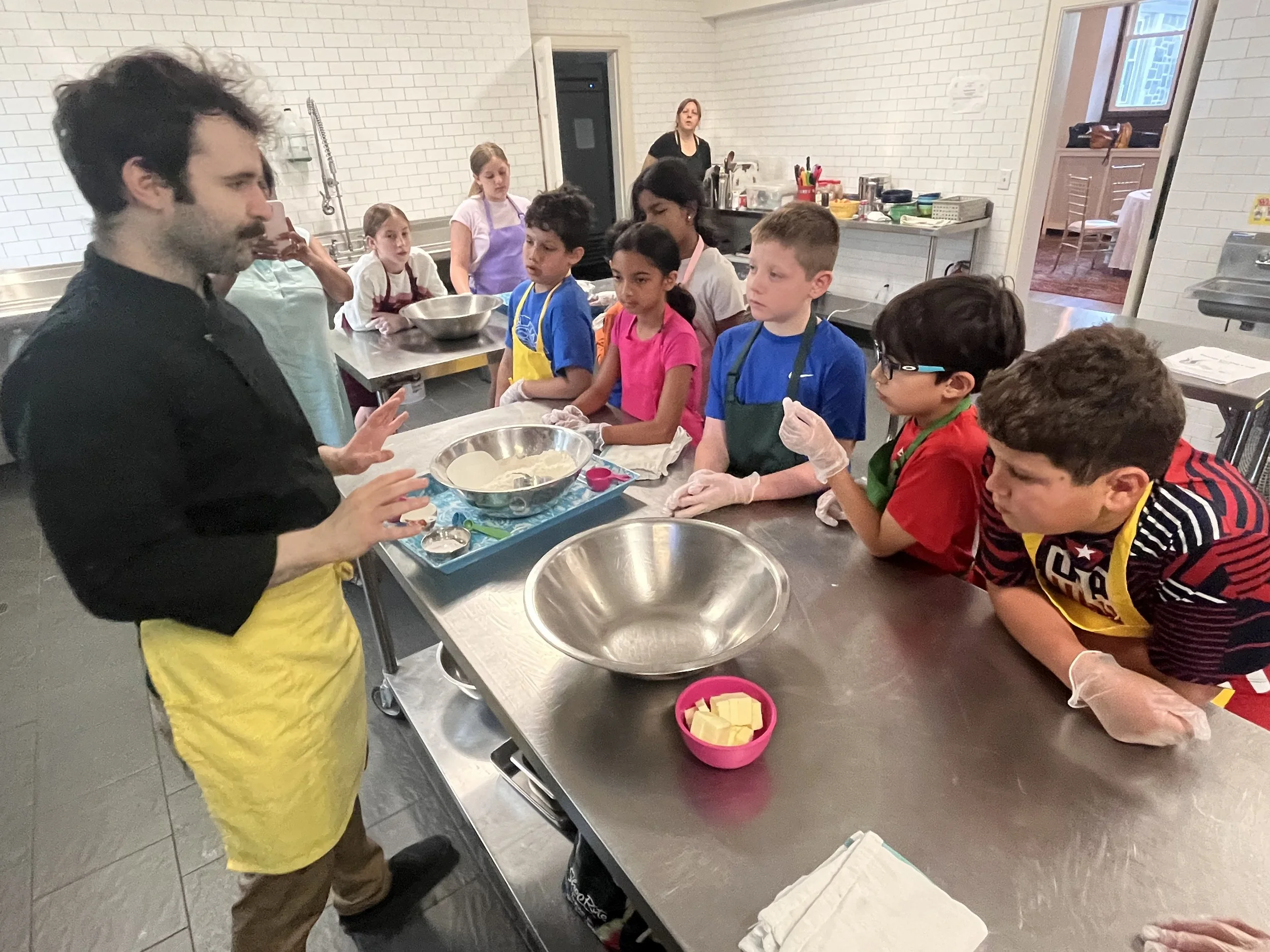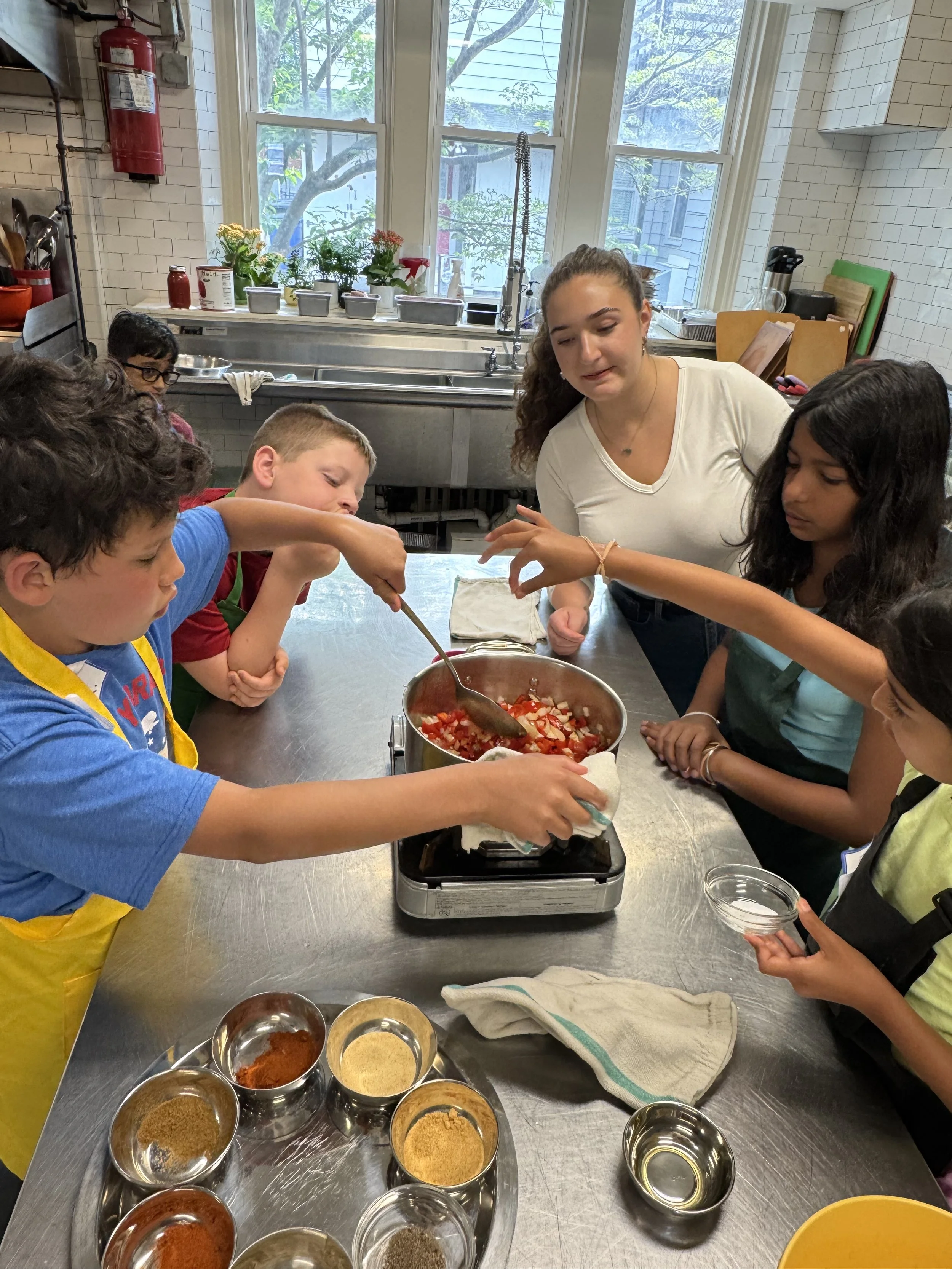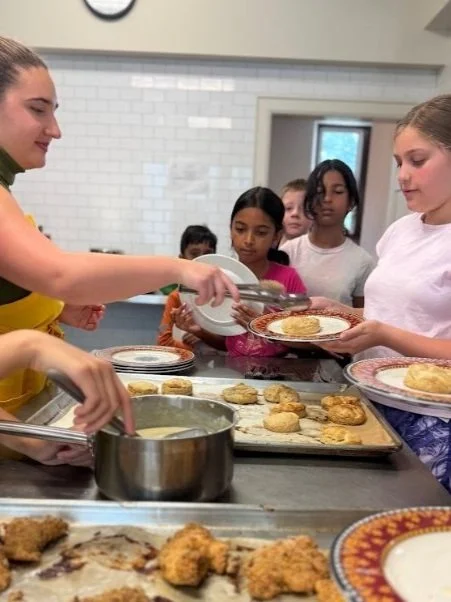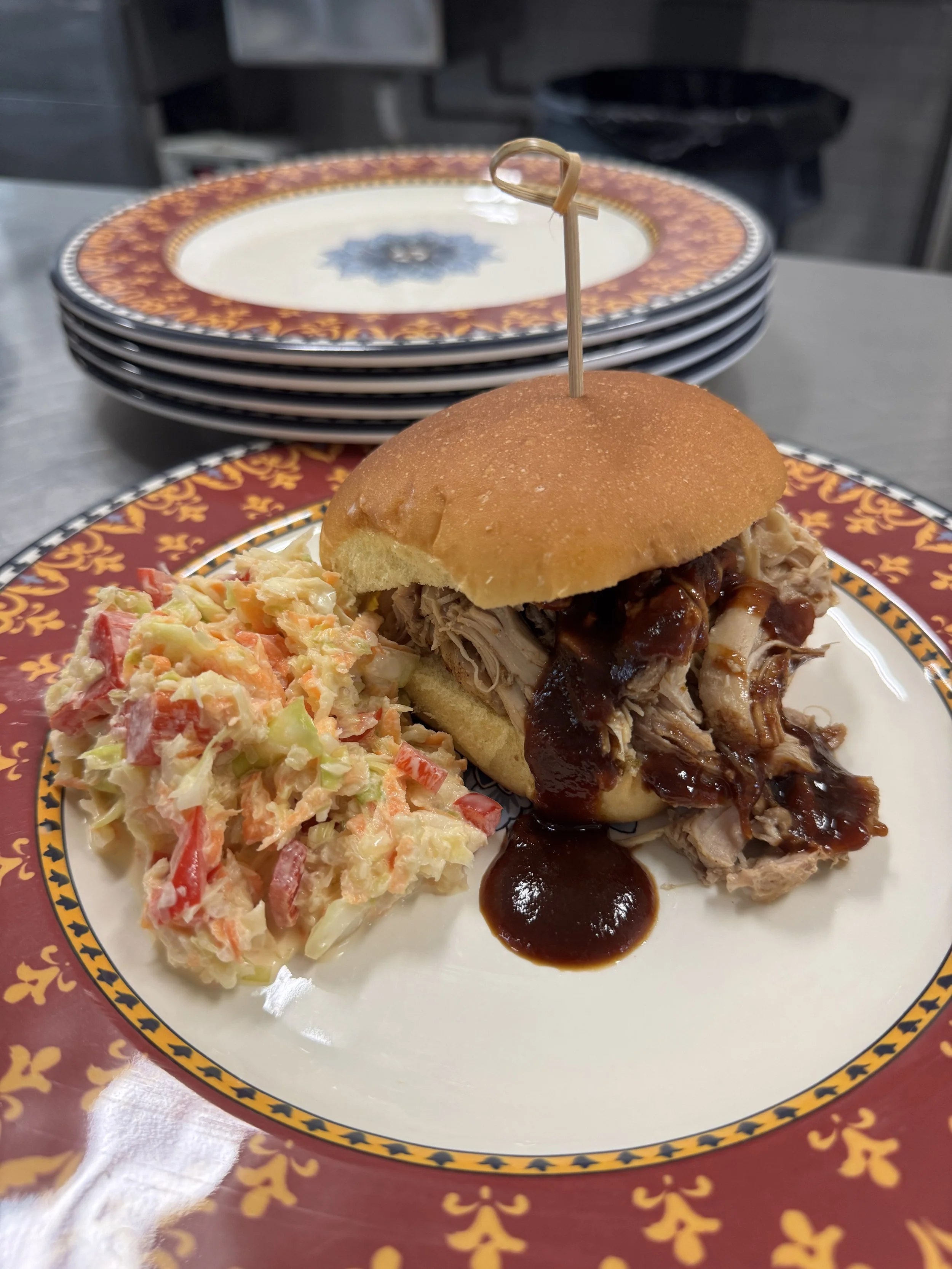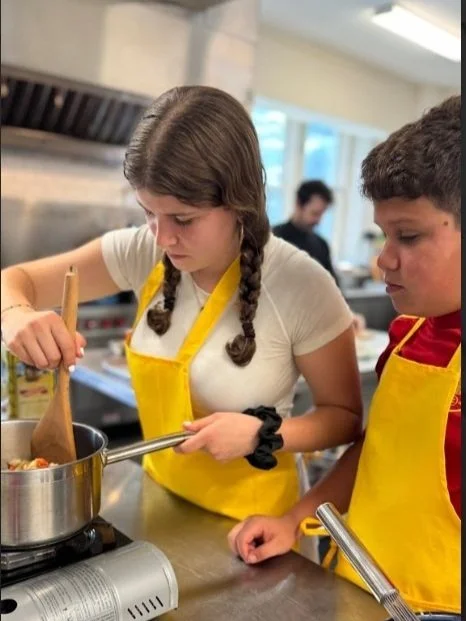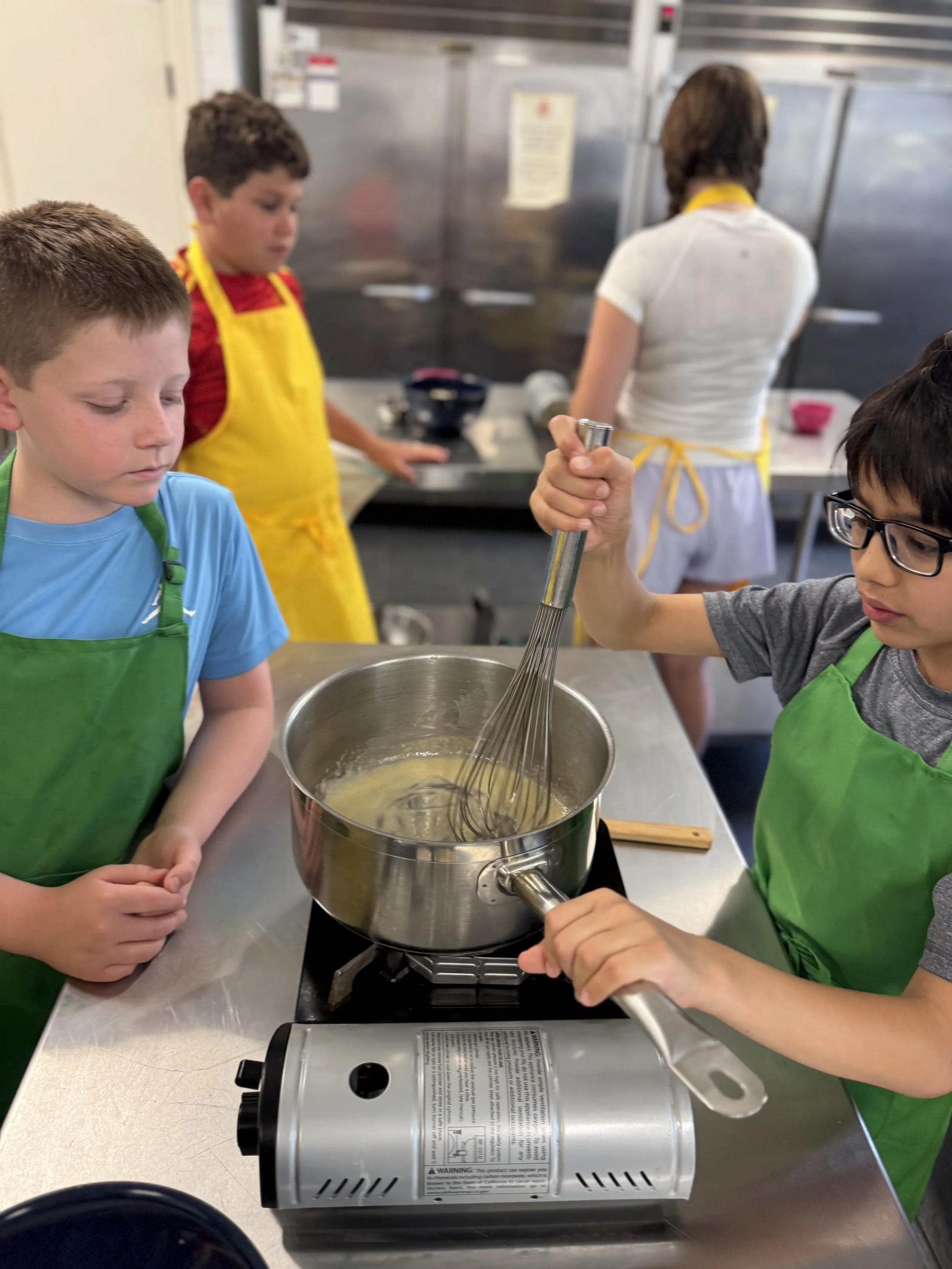For the first day of the Passion for Spices cooking camp, we travelled to the Midwest. The students started by making their very own pasty dough – that’s right, pasty, not “pastry”. The Michigan pasty is a delicious dough pocket filled with meat and vegetables. It originated in the Michigan mining community, where it was popular for its handheld ease. Once they got their dough in the fridge to chill, our young chefs practiced chopping a variety of vegetables, allowing them to further hone their knife skills. Next, our students turned up the heat, both literally and figuratively. We put some pots on the burners and added our vegetables and spices to the pan, cooking them down until they became the perfect base for our turkey chili. Originally from the Texas-Mexico border, Turkey Chili offers a leaner, more heart-healthy alternative to traditional beef chili. While the turkey chili was simmering on the stove, we finished up our pasty filling. Once the filling was cool, the kids rolled out the dough and filled it, sealing it with a fork. Then we popped those in the oven. Needless to say, the kitchen smelled fantastic. In the afternoon, the young cooks were hard at work making cinnamon rolls from scratch. Every piece of the recipe, from the dough to the filling, was measured and mixed by the students. Even the icing was homemade! It was a sweet, protein-packed first day!
On Tuesday, we trekked to the Deep South and found ourselves in Louisiana. First up on the menu was a heart-warming cajun classic: étouffée. The students began by preparing the Holy Trinity. Different from a classic mirepoix, which features carrots, celery, and onions, the Cajun Holy Trinity is comprised of bell peppers, onions, and celery. It’s a staple in most traditional Cajun dishes. Our etouffee was roux-based, which is a method of thickening that utilizes an amalgamation of flour and fat that’s browned over the stove. Along with a roux and the holy trinity, we also added Cajun seasoning, a recognizable blend of paprika, garlic powder, black pepper, white pepper, onion powder, dried oregano, and cayenne pepper. Traditionally, étouffée is made with andouille sausage; however, we opted for chicken sausage for a more nutritional meal. For a hearty side dish, the young chefs also made cheesy grits. We brought the grits to a simmer and added seasonings like butter, Worcestershire sauce, garlic powder, and, of course, an ample amount of cheese. In the afternoon, we took some of the Cajun seasoning from earlier in the day, and the students marinated and grilled their very own version of blackened chicken, using a cast iron skillet to create those perfect grill marks.
For the third day of the Passion for Spices cooking camp, the students made dishes from the Southeast: biscuits and gravy, oven-fried chicken, and peach cobbler. To prepare the fried chicken, the young chefs dredged and breaded each breast to create the perfect crumb coating. Then the chicken was baked in the oven until crispy. We were able to achieve that crunchy fried texture without using seed oils or unnecessary fats. This healthier alternative preserved the mouthwatering flavor of Southern fried chicken while also improving its nutritional density. To accompany our main entree, we made a side of biscuits and gravy. The biscuit dough, handmade and cut by our students, was flaky and full of buttery layers. The gravy had a base of homemade chicken stock and was thickened with a roux. The peach cobbler in the afternoon was the perfect summer treat. We’re right in the middle of stone fruit season, so the peaches were picked up from the farm fresh that morning. All in all, this day was a great example of how simple, organic ingredients are the key to a delicious meal.
On the fourth day of our cooking camp, the young chefs tackled New England classics like Boston baked beans and corn chowder. For our baked beans, we combined beans and our seasonings, such as Worcestershire sauce and ketchup, into a saucepan. Once the beans were simmering, they were finished off in the oven. We got the corn chowder started with corn stock made that very morning from our leftover cobs. Using scraps of meat and vegetables to make stocks is a great way to reduce food waste in the kitchen. Apple cider donuts might be widely considered a fall treat, but they are just as enjoyable in the summer sun. The students started by making their batter, adding garam masala and apple cider to make a moist, perfectly spiced dessert. Then they piped the batter into donut trays, baked them until golden brown, and coated them with garam masala and sugar.
For the fifth and final day of our summer program, we ended our food tour with a classic southern barbecue. Using pasture-raised chicken, combined with a homemade barbeque sauce, the young chefs put together beautiful pulled chicken sandwiches. You haven’t really tried coleslaw until you tried homemade coleslaw, so the kids went to work thinly slicing cabbage and combining it with our slaw dressing. For their final dish of the week, the kids made cornbread muffins. They combined cornmeal, sugar, and baking powder in a large bowl, then prepped their wet ingredients separately. Finally, they mixed everything together and put the mix in a muffin tin to bake. The cornbread muffins came out perfectly brown– a fantastic end to a fantastic week!

